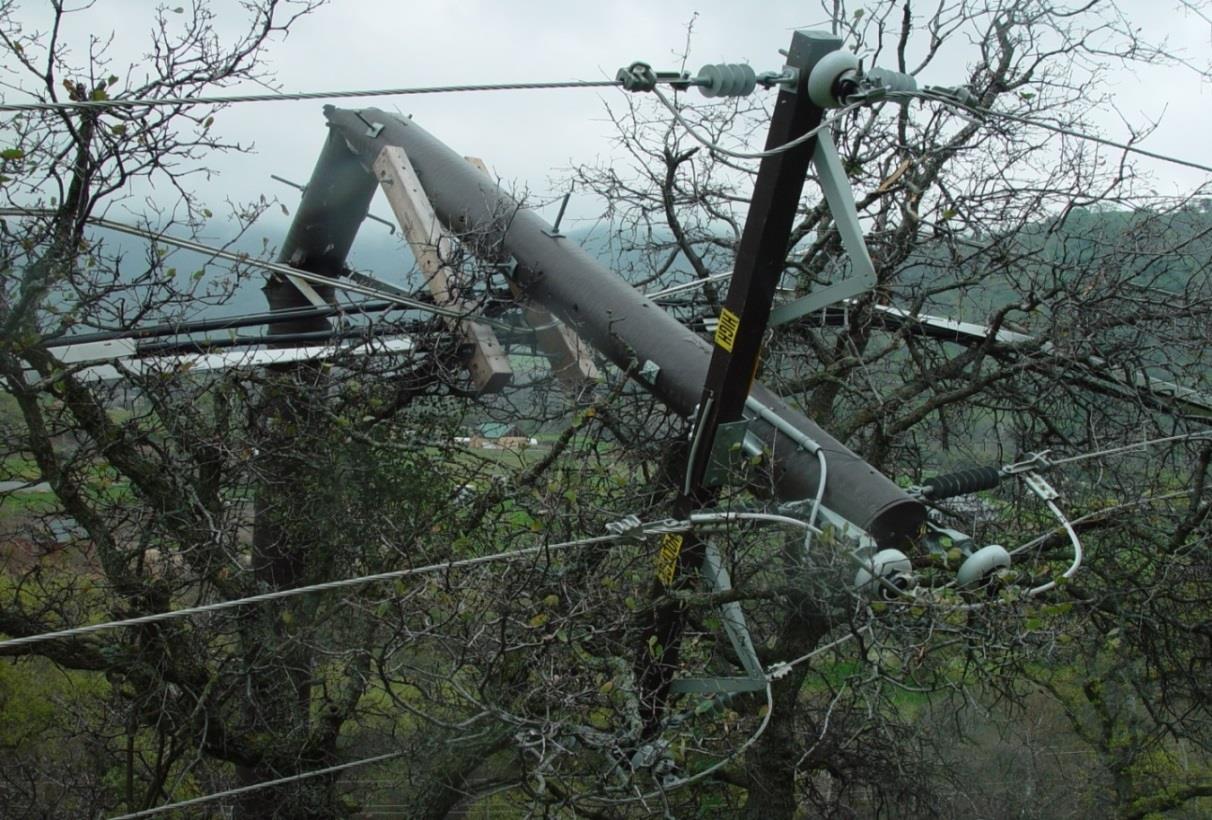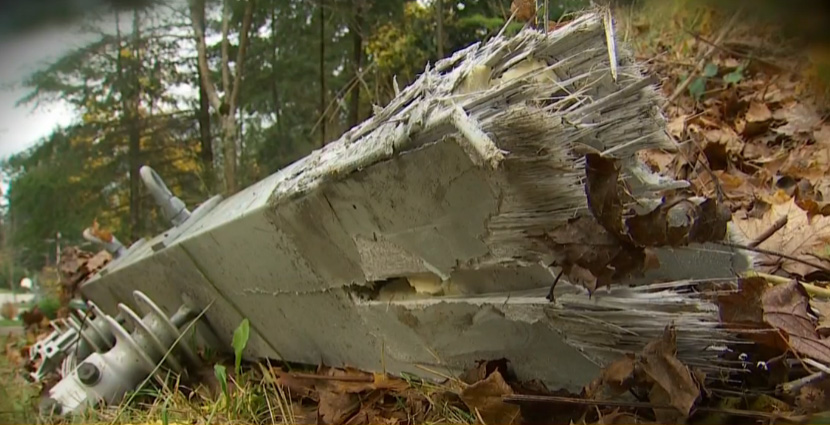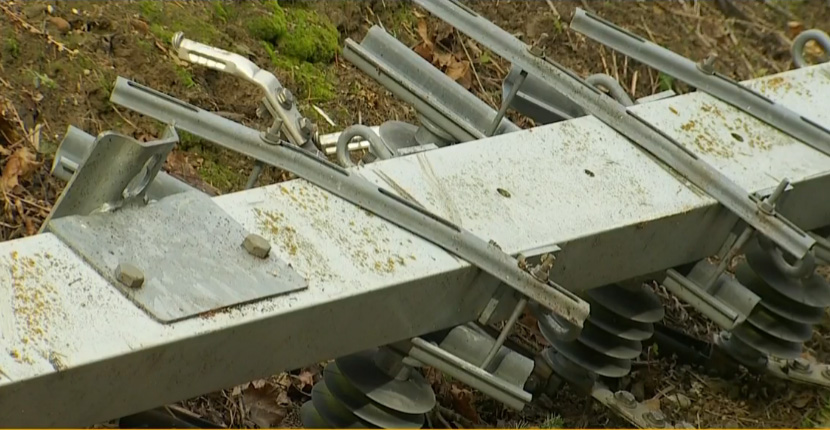Crossarm Evaluation
Douglas fir crossarms have a proven history of longevity and reliability in the utility industry. Alternatives to wood can only speculate on projected or expected lifecycles.
Wood is renewable, recyclable and biodegradable. Fiberglass, steel, and concrete are produced using finite, non-renewable resources. Wood, by its nature, reduces greenhouse gas emissions. Harvested timber from sustainable forests naturally sequesters atmospheric carbon dioxide. New forests absorb carbon and release oxygen at a higher rate than mature trees.
The fiberglass crossarm industry has many claims detailing the product is superior to wood. However, when these claims are reviewed, they are at minimum misleading, and false in many facets.
Statement from fiberglass crossarm manufacturer:
“fiberglass utility products are an environmentally friendly alternative to wood. They are long-lasting, use recycled materials and require no harmful chemicals as preservatives”.
The Truth About Wood Vs. Fiberglass Crossarms
Although wood requires some preservation to ensure a full life cycle, it doesn’t require styrene and other polymers which are toxic and cancer causing. These carcinogens are primary ingredients in the fiberglass crossarm. In addition, wood is a natural carbon sequestration substrate, fiberglass is not.
According to a report conducted by the Treated Wood Council, treated Douglas fir wood has a lower environmental impact than fiberglass, steel and concrete in 5 of the 6 main environmental impact categories (anthropogenic greenhouse gas, total greenhouse gas, acid rain, ecotoxicity, and eutrophication-causing emissions).


Statement from fiberglass crossarm manufacturer:
Fiberglass crossarms have an “Expected and projected life of 60+ years”
Not one fiberglass crossarm has been in service that long. Douglas fir crossarms have been in service up to and exceeding 100 years.
Statement from fiberglass crossarm manufacturer:
“not a single…crossarm has failed due to environmental degradation”
Environmental degradation affects all materials. Extended exposure to sun causes fiberglass crossarms to fray and splinter. Fiberglass crossarm manufacturers have developed a UV “protective coating” that if scratched or chipped, may compromise the ability to protect the crossarm. Douglas fir crossarms are extremely durable and have an excellent track record of performing in all environments.


Statement from fiberglass crossarm manufacturer:
Fiberglass crossarms are “Up to 6 times stronger than wood”.
There are no published strengths that corroborate this statement. The published data states that it can be up to 3 times as strong, but the fiberglass crossarm referenced weighs more than the Douglas fir crossarm it is being compared to, discrediting the overall claim.
Statement from fiberglass crossarm manufacturer:
Fiberglass crossarms have “excellent dielectric properties”
At the time of manufacture, this fiberglass claim may be accurate. However, once fiber separation takes place in-service, the tracking potential actually increases, contributing to flashover and pole fires.
Douglas fir crossarms have proven dielectric properties. Third party testing and over 100 years of service in the U.S. Electrical grid have verified their performance.
Statement from fiberglass crossarm manufacturer:
“Fiberglass crossarms are built to last 60 or more years in any climate, two to three times longer than
comparable wood crossarms.”
Fiberglass crossarms have not been tested under load duration. Millions of Douglas fir distribution crossarms and transmission framing components have been in service for well over 100 years.
Fiberglass distribution crossarms have just been in service for over a decade, making the life span claim listed above only an unsubstantiated assumption.

